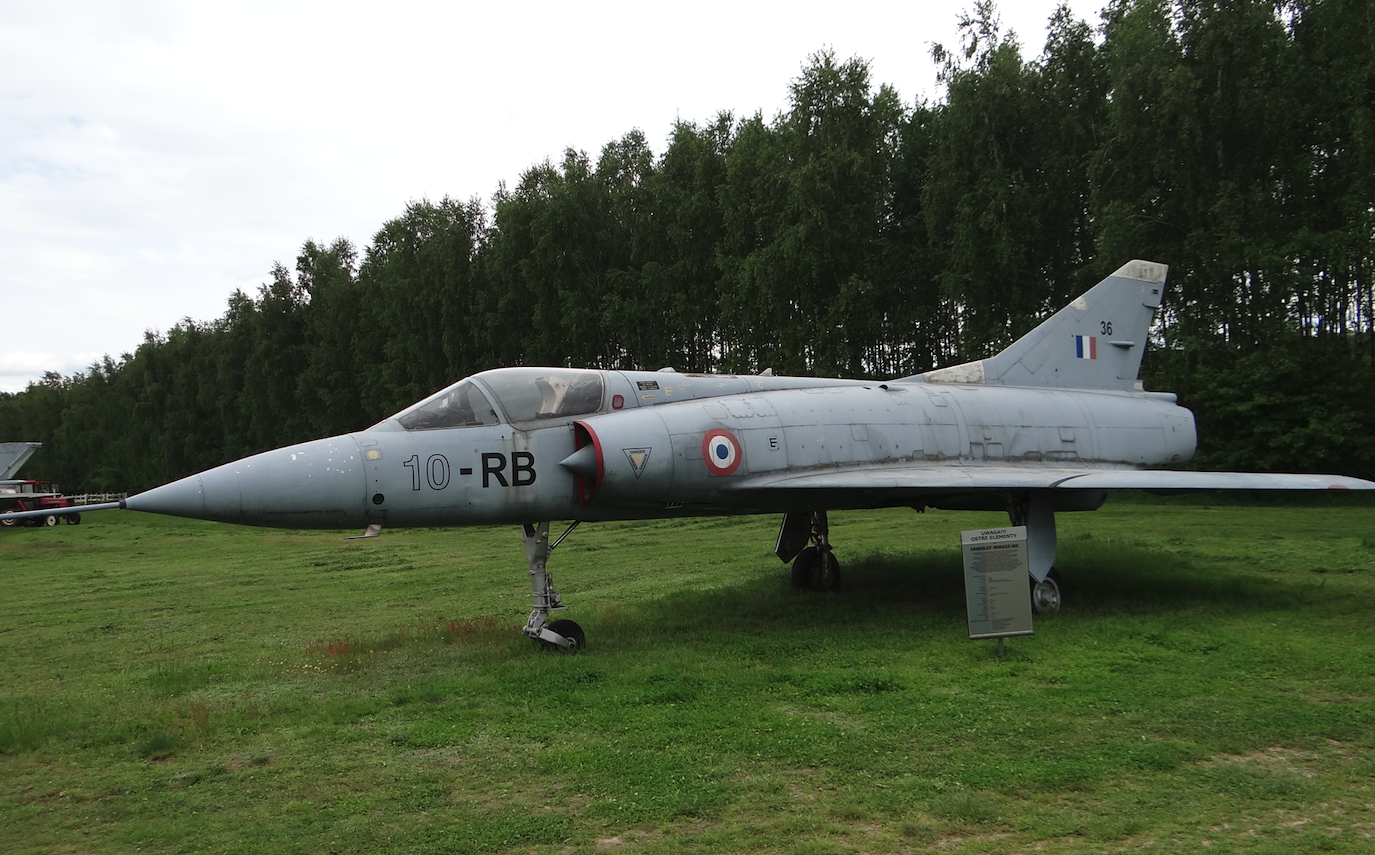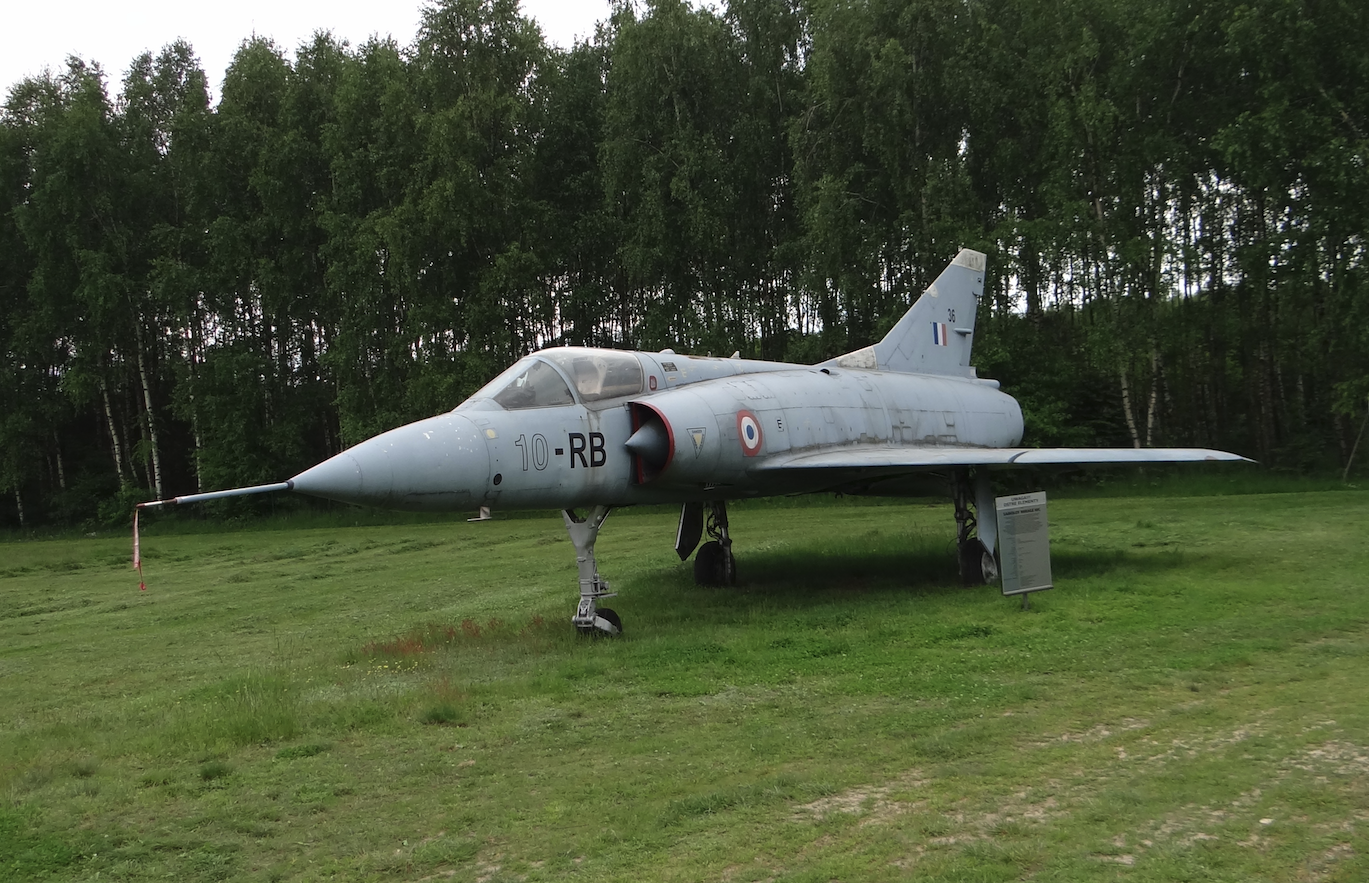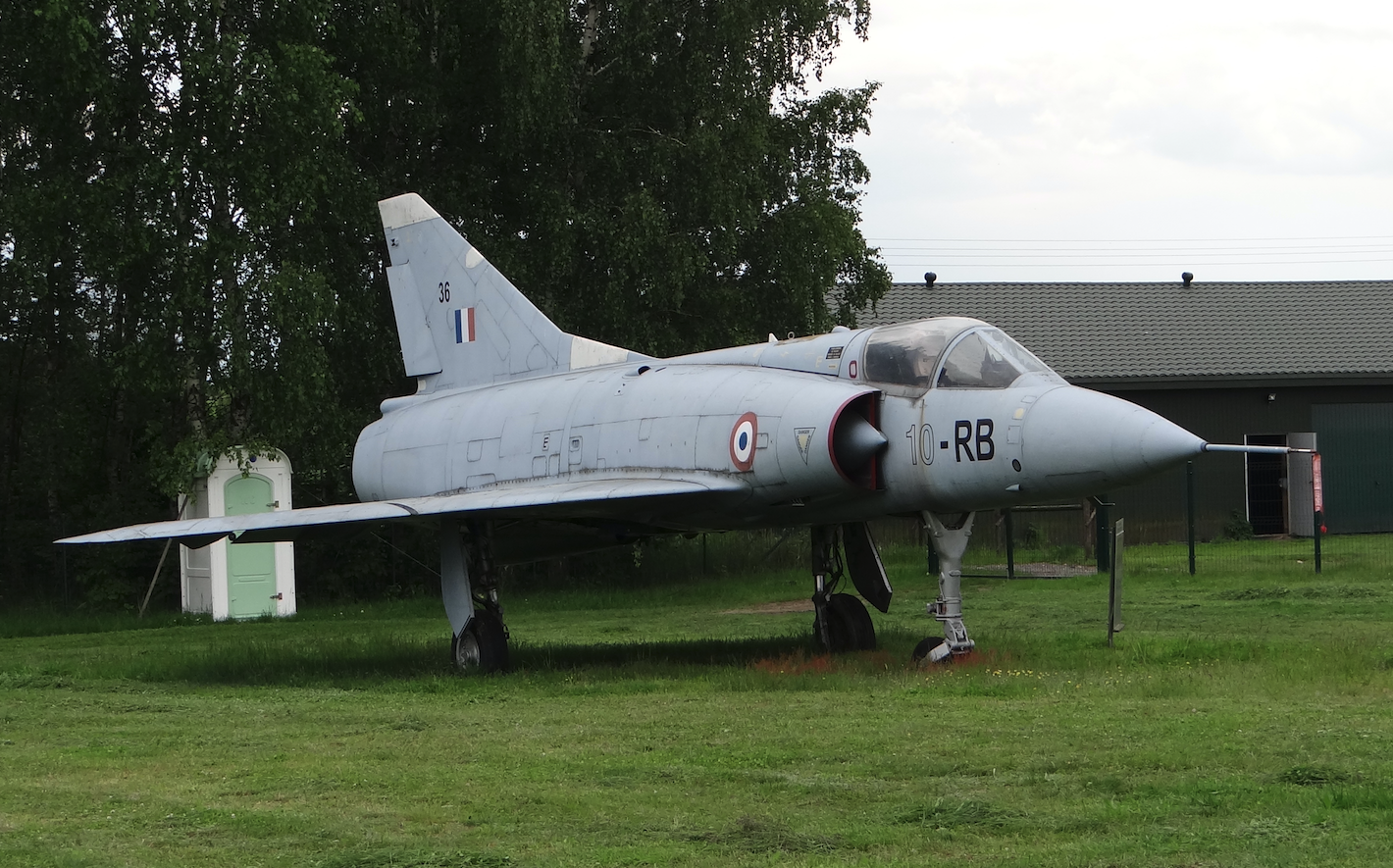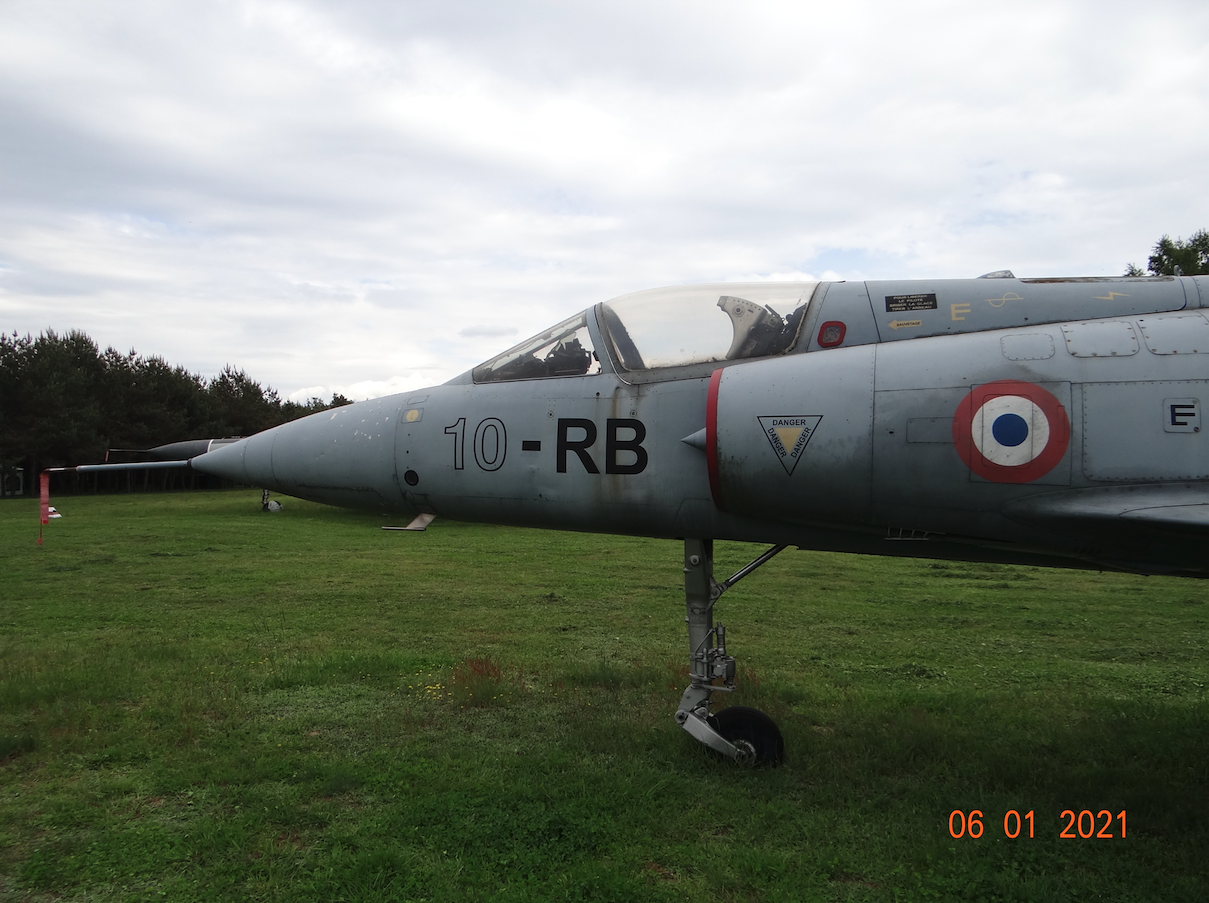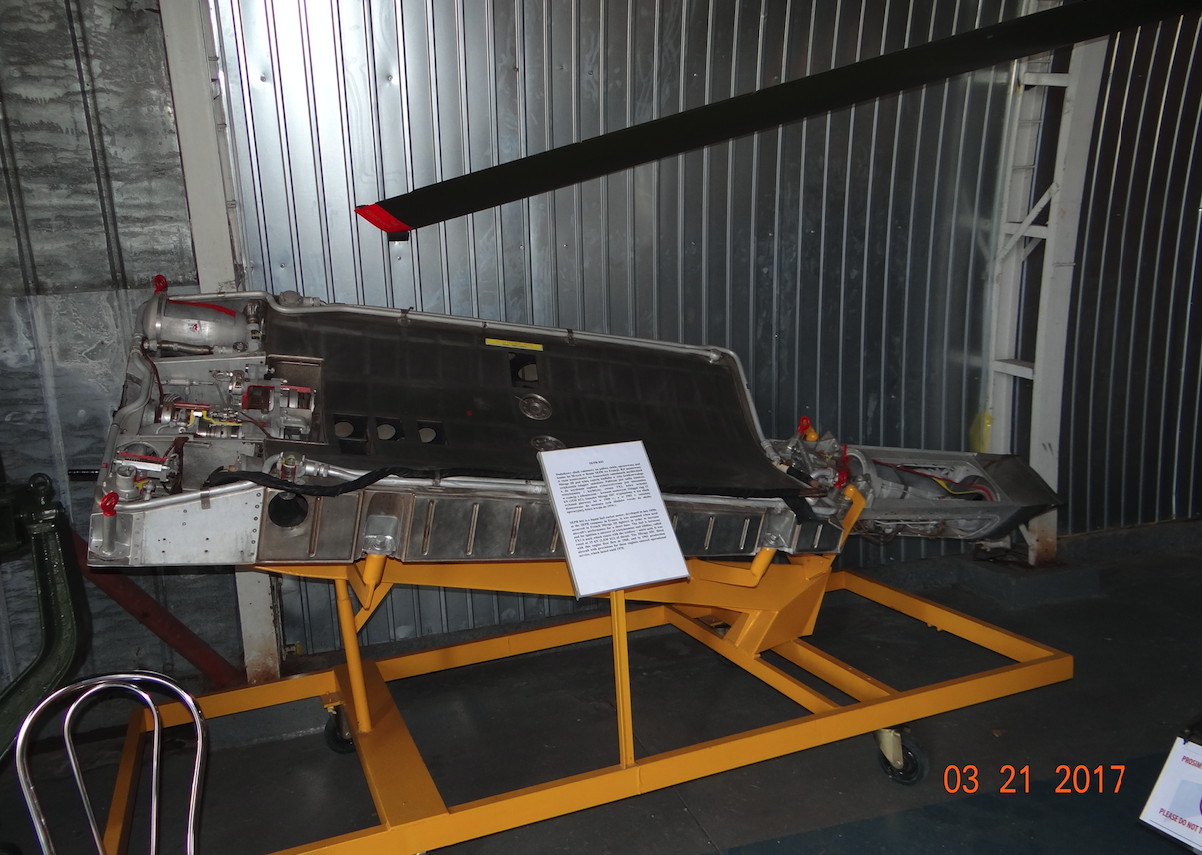Kraków 2022-11-20
147 Section 1956-11-17.
Avions Marcel Dassault Mirage III-C 10-RB 36.
France.
The Mirage III aircraft is a further development of the Mirage I aircraft. On June 18, 1959, on one of the Mirage III-A prototypes, the world speed record in a 100 km closed circuit was set, achieving an average flight speed of 1,771 km/h. The Mirage III-C version entered service with the French Army.
Assumptions of the structure.
At the beginning of 1956, after work on the Mirage II aircraft was discontinued, the development of a more promising fighter began, which was designated Mirage III. Construction began before the full development cycle of the Mirage I fighter was completed. The overall layout was left unchanged. However, the former aircraft was larger than its predecessors. When designing the airframe, the so-called "rule of fields" discovered in 1953 was used. The drive system used has changed. Two British-made engines were abandoned, and one engine of domestic design, Atar 101 G-1, with afterburning thrust of 1 x 39.20 kN was used.
The wing has undergone a very significant change. The shape remained the same, but a completely different profile was used. It was thinner now. It can be assumed that the designers "picked" the wing used in the American F-102 fighter. This is likely because there is not much in the available literature on aerodynamic research conducted in France.
The machine made its first flight on November 17, 1956. During the tests, during one of the descent flights, the aircraft exceeded the speed of sound. Some time later, the airframe received a more powerful Atar 101 G-2 engine with 1 x 3,000 kG without afterburning and 1 x 4,200 kG with afterburning, and the machine exceeded the speed of sound in level flight. The maximum speed achieved was Ma-1.52. During the tests, the aircraft underwent minor or major changes several times. The air intakes have been rebuilt.
On one of the prototypes, an additional rocket engine was installed. During the tests of this machine, a speed of 1,900 km/h was reached, which corresponds to Ma-1.8. The rocket unit used was marked SEPR-841 and, despite its advantages, was not widely used. This was due to difficulties in ground handling and use in the air.
The Mirage III-001 aircraft fulfilled the tasks set before it, but the requirements of future users have changed. They demanded a more versatile fighter. To meet these requirements, the company built a series of 10 fighters designated Mirage III-A. The aircraft received Atar 09 engines with even greater thrust of 1 x 58.90 kN with afterburning. The load-bearing area of the wings was increased from 29.0 square meters to 34.10 square meters. The nose of the leading edge has become curved. Reduced, once again, the relative thickness of the profile, from 5% to 4.5% at the hull and 3.5% outside. Adjustable supersonic air grips were used.
The first copy of the Mirage III-A.01 was flown on May 12, 1958. This copy on October 24, 1958, reached the speed of Ma-2 at an altitude of 12,500 m. Other sources say that it took place in November 1958. On June 18, 1959, on one of the Mirage III-A prototypes, the world speed record was set in a 100 km closed circuit, achieving an average speed of 1,771 km/h. The last 6 copies have already received full equipment, including the Cyrano I bis radar station. These machines became the model for serial machines marked Mirage III-C.
Mirage III-C.
The first Mirage III-C took off on October 9, 1960. Already in August 1958, the French government ordered 100 fighters. Deliveries began in January 1961. Ultimately, 95 machines entered service with the French Air Force. The last aircraft was delivered on November 20, 1962. Aircraft numbers 96 to 100 served as bases for building new versions. A total of 196 (other sources say 244) Mirage III-Cs were built. The French Air Force used these machines as interceptors in "all weather conditions" and a daytime tactical fighter. There were also two versions for export; Mirage III-CJ – 69 units for Israel and Mirage III-CZ – 16 units for South Africa.
Mirage III-CZ aircraft were withdrawn from South Africa’s armament in 1991. At least 12 machines served as the basis for conversion into Cheetah fighter-attack aircraft. Construction was carried out in Atlas Aircraft’s own facilities. The rest of the machines were distributed around South African museums.
The Mirage III-C is a single-engine, triangular wing low-wing monoplane with a sweep of 60.34 degrees and negative lift of 1 degree. All-metal construction. The machine had a lifting capacity of 1,200 kg. The permanent armament was two very good 30 mm Defa 552 cannons, the rate of fire was 1,200 rounds per minute, and the range was 2,000 m.
The Mirage III-C could be armed with; C.P.R. class p-p Matra R.511 with semi-active radar guidance, with a range of 8 km. C.P.R. class p-p Matra R.530 with a range of 10 km. C.P.R. class p-p AIM-9 Sidewinder with a range of 6 km. 3 pieces of CCP class p-z AS.20 radio controlled, with a range of 10 km. C.P.R. class p-z AS.30 with a range of 11-15 km. n.p.r. p-z class Bomb weighing 3 x 455 kg.
When discussing the Mirage III-C aircraft, it is worth mentioning the courtesy visits of these fighters to Poland. In 1967, during the flight of Mirage III-C aircraft from France to CCCP, these aircraft landed at the airfield of the higher aviation school for officers in Dęblin. The unit in which the fighters flew was named Normandy-Niemen. During World War II, a group of French airmen fought against the Germans on the Eastern Front, and that was the reason to visit the old battlefields years later.The French military ended the use of Mirage III-C aircraft in 1993. Many other versions were built on the basis of the Mirage III-C aircraft, which were intended for foreign customers and as experimental aircraft.
Mirage III-B.
From the Mirage III-A version, the two-seat Mirage III-B is derived mainly for training pilots on the new equipment. The aircraft prototype made its first flight in October 1959. Serial production started in 1962. Some of the machines were produced as combat machines. The main user of the Mirage III-B aircraft was France. The French Air Force received 26 copies from March 1963 to December 1964. In April 1966, almost all Mirage III-B aircraft were grouped at one airfield, where they were used to train French and foreign pilots. Several copies were exported to other countries; BS – for Switzerland, BZ – for South Africa, BJ – for Israel. The last five Mirage III-Bs left service on January 15, 1992.
Data T-T Mirage III-C:
Span 8.20 m. Length 13.85 m. Height 4.50 m. Curb weight 5,900 kg. Maximum weight 11,800 kg. Load weight 1,200 kg. The amount of fuel in the airframe is 3,400 liters. Top speed 2,220 km/h. Maximum speed Ma – 2.15. Climb speed 200 m/s. Landing speed 240 km/h. Range with armament 1,500 km. Maximum range 2,400 km. Dynamic ceiling 18,000 – 23,000 m. Take-off run 900 m. Take-off run 860 m. Atar 9.C engine, 41.62 kN without afterburning, 62.76 kN with afterburning.
Written by Karol Placha Hetman

